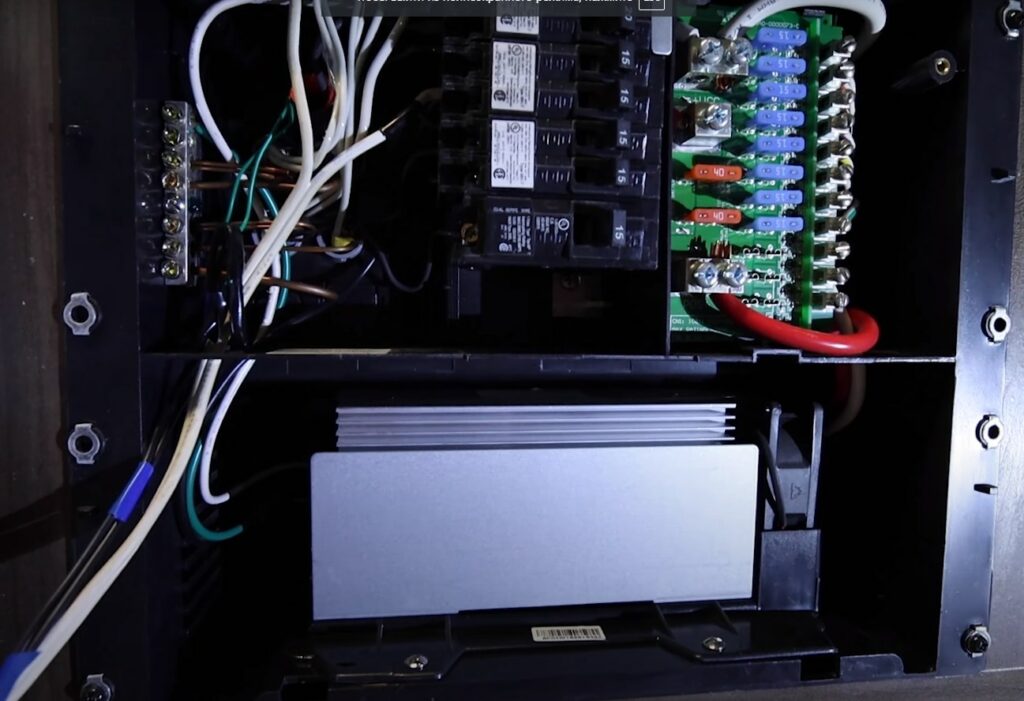The distinction between power inverters and converter-chargers [as well as inverter-chargers] lies in the processes they perform in conversion. A power inverter takes on the task of converting direct current (DC), obtained from batteries or solar panels, into alternating current (AC).
Conversely, a converter charger takes alternating current and converts it into direct current for battery charging and powering DC electrical devices. Additionally, there exists a hybrid device known as an “inverter-charger,” combining the functions of an inverter and a converter.
Clearly, confusion often arises, especially on platforms like YouTube, where the difference between inverters, converters, and inverter chargers might not be entirely clear. To dispel this confusion, below is an exhaustive guide clarifying this distinction:
What is the Difference Between an Inverter and a DC Inverter?
Basics:
- Inverter;
- Converter;
- Inverter-Charger.
| Property | Inverter | Converter | Inverter-Charger |
|---|---|---|---|
| Input | 12, 24, 48 VDC | 110 (or 220) VAC | Both AC & DC |
| Output | 110 (or 220) VAC | 12, 24, 48 VDC | Both AC & DC |
| Powers | AC appliances | DC appliances | Both AC & DC |
| Battery | Accepts power | Charges | Bidirectional |
| Shore power | Pass-through | Converts to DC | Bidirectional |
RV Inverter
Looking to power AC appliances on the go? The ideal solution is an inverter equipped in your RV or camper. This versatile device works with various power sources – 12V, 24V, 48V batteries, and solar panels.
Inverters take DC from batteries or solar panels and convert it into AC, making it compatible with electrical appliances. When selecting electrical equipment, whether inverters or converters, products bearing the UL (Underwriters Laboratories) label are generally considered of higher quality.

Inverter Operation
But how does an inverter work, you might ask? Let’s delve into the basic principles. The abbreviation AC stands for “Alternating Current,” which means a current oscillating between positive and negative polarities alternately. On the other hand, DC stands for “Direct Current,” where the current consistently flows from negative to positive poles without oscillation:
- While this might seem intricate at first glance, the operation of an RV inverter is far from complex. The RV system comprises a battery bank, often composed of several 12V batteries. These batteries power 12V DC devices and lighting fixtures. Unfortunately, not all devices can be powered this way, as some require an AC source to operate effectively;
- This is where the inverter comes to the rescue, allowing a broader range of electrical devices to be used. From refrigerators and microwaves to televisions and various electronics, this setup enhances comfort and enjoyment during outdoor leisure.
To operate more powerful appliances, a sizable battery bank paired with an appropriately sized inverter is necessary. Considering that batteries provide only a 12V output, a larger amount of amps is inevitably consumed compared to the 120V shore power.
RV Converter Charger
Another indispensable component of the RV ecosystem is the power converter. Often, acquiring a new inverter leads to the need for converter upgrades. The converter performs the function of converting direct current into alternating current – the reverse of the inverter’s function.
This component is typically integrated into the RV’s electrical system, providing power to DC devices when connected to shore power and simultaneously replenishing the charge of onboard batteries.
RV Inverter Charger
Enter the inverter converter (or charger) – a convenient combination that proves particularly useful in confined spaces. This device seamlessly blends inverter and converter technologies, often complemented by a distribution module.
What does this mean for you? It means the luxury of enjoying your morning coffee during pit stops without worrying about battery levels upon returning to camp:
In cases where your vehicle is equipped with a solar system, the need for returning might be eliminated thanks to the inverter charger. This device not only converts DC to AC but also detects external AC sources, such as shore power or generators, to initiate battery charging.
Considering the necessity of space-saving in an RV, the compactness of inverter chargers compared to separate inverters and chargers makes them highly sought after. In the absence of grid or generator power, the inverter charger seamlessly shifts into “inverter” mode, ensuring uninterrupted usage of AC devices.
For a visual guide to installing an inverter charger in an RV, you can watch the informative video below.
Conclusion
Thus, in the realm of RV power management, three distinct yet interconnected components exist. Namely, power inverters, converter-chargers, and universal inverter-chargers. Navigating these devices becomes significantly easier when understanding their unique functions and benefits.
A power inverter, serving as the bridge between DC and AC, allows RV enthusiasts to bring home comforts on the road. It converts DC energy generated by batteries or solar panels into AC energy, granting access to a broader range of electrical devices, and enabling a mobile lifestyle. When selecting electrical appliances, quality matters, and products certified by UL serve as beacons of reliability and performance.
Conversely, the converter-charger fulfills the role of energy replenishment. Converting DC to AC, not only supports the operation of DC devices when connected to shore power but also sustains the viability of onboard batteries. The synergy of inverter and converter elements results in an inverter charger – a compact power source that caters to both conversion and battery charging needs, meeting the demands of modern nomads.
As the RV community transitions toward eco-friendly energy sources, solar systems become invaluable companions. The inverter charger, with its ability to smoothly transition between power sources, ensures an uninterrupted energy supply. This allows for sipping morning coffee in nature or consistently using AC devices while harnessing renewable solar energy.
In the pursuit of efficient space utilization within RVs, the inverter-charger stands as a key innovation. The melding of technologies not only reduces but also enhances its functionality. As off-road vehicles gain popularity, these devices remain unsung heroes, enabling adventurers to conquer horizons without sacrificing comfort.